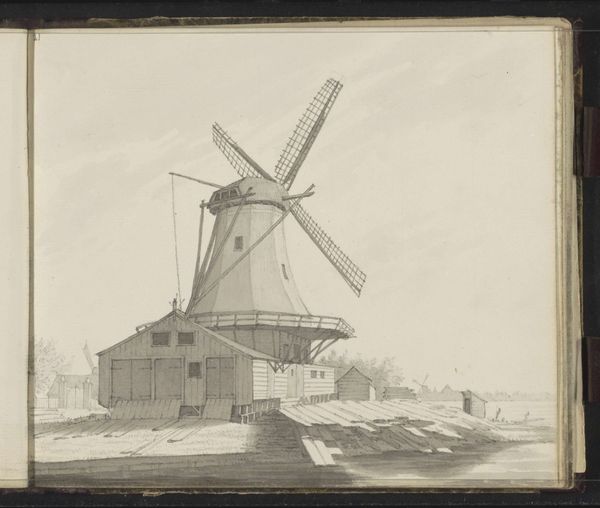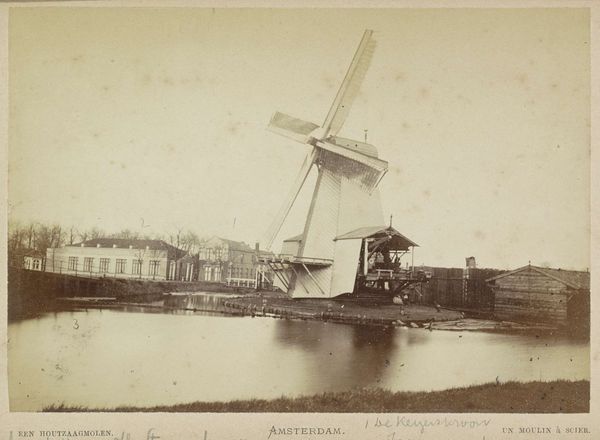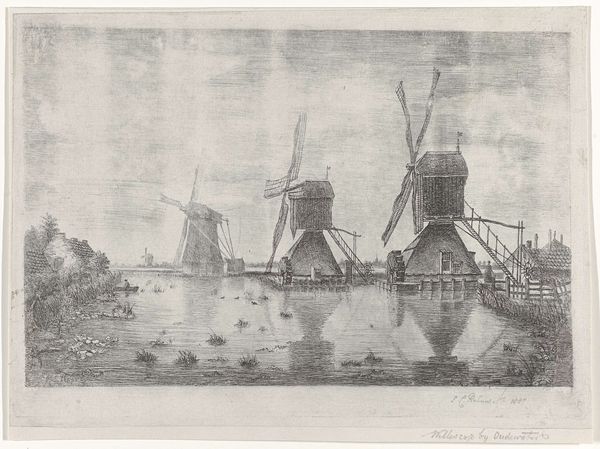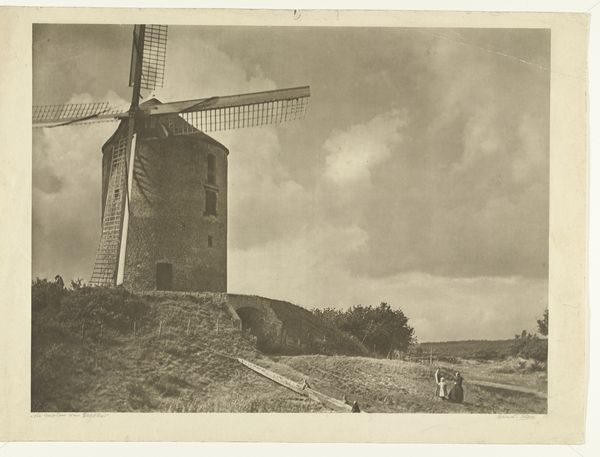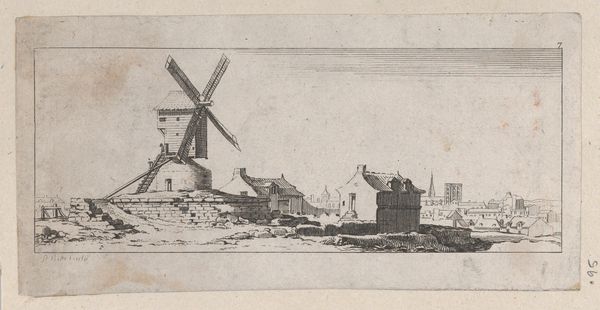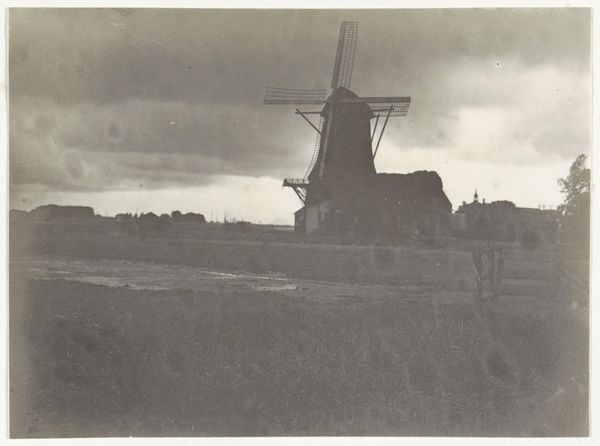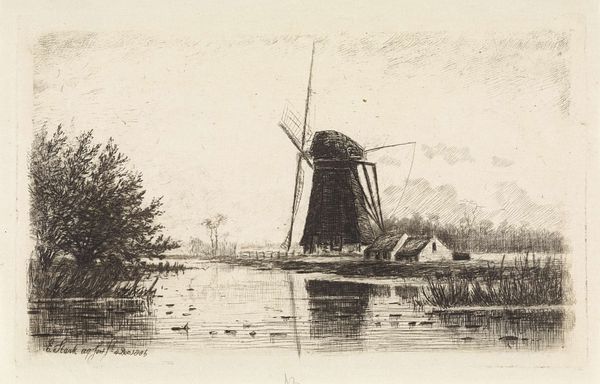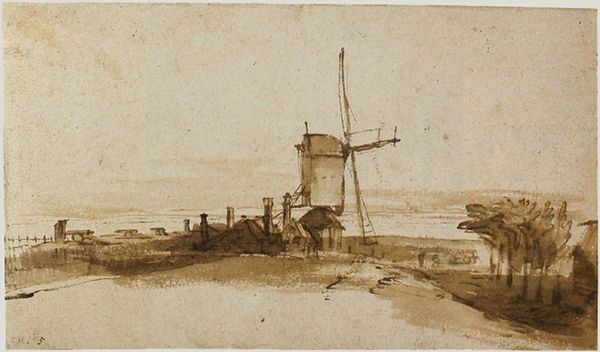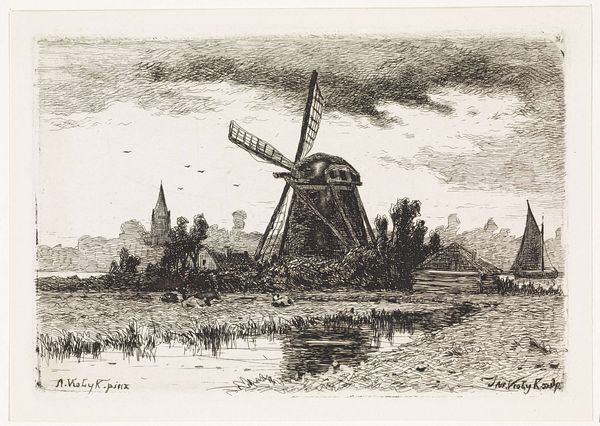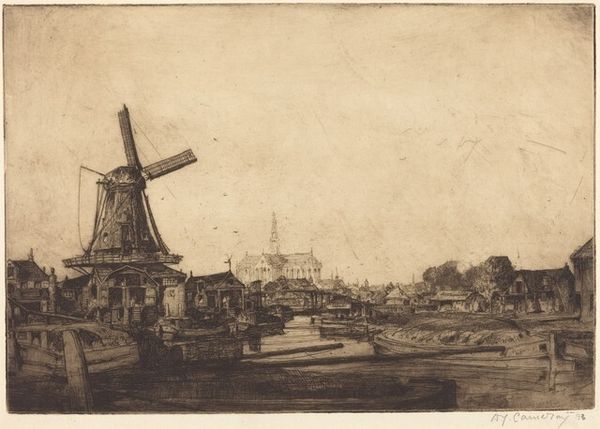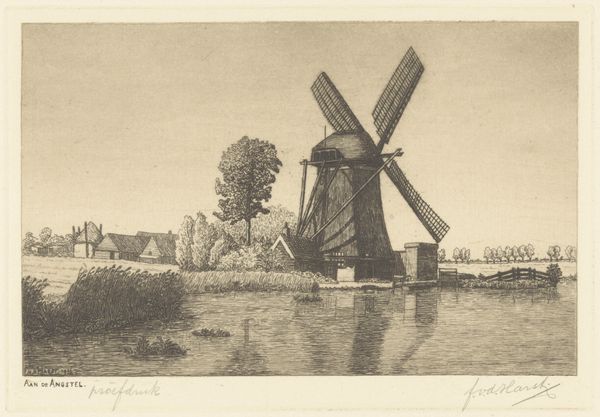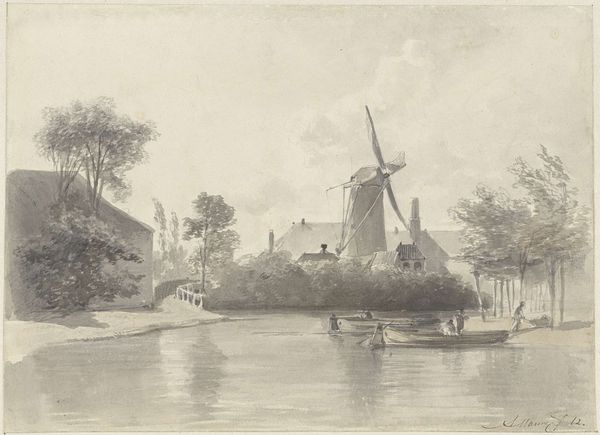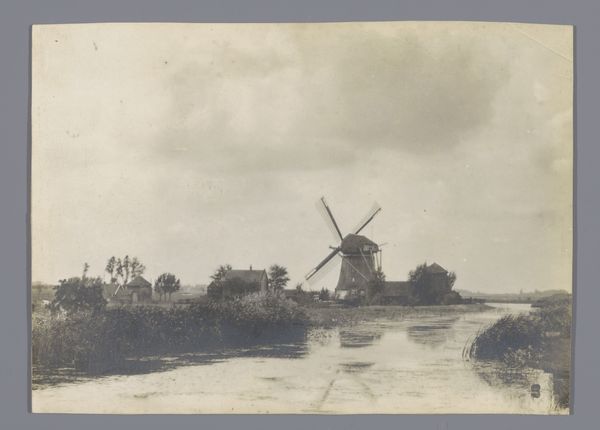
drawing, paper, ink
#
drawing
#
outdoor environmental image
#
dutch-golden-age
#
landscape
#
outdoor photograph
#
outdoor photo
#
paper
#
outdoor photography
#
historical photography
#
ink
#
realism
Dimensions: height 117 mm, width 194 mm
Copyright: Rijks Museum: Open Domain
Curator: Hendrik Abraham Klinkhamer's 1853 drawing, "Molen bij het bolwerk Het Blauwhoofd te Amsterdam," presents a tranquil Dutch scene rendered in ink on paper. Editor: My initial thought? It’s wistful, almost dreamlike. The limited palette and delicate lines create a sense of distance, like a memory fading at the edges. Curator: Indeed. This work offers insights into the artistic conventions of its time. The depiction of the windmill within the context of the Blauwhoofd bastion provides a glimpse into Amsterdam's economic and military landscape of the mid-19th century. Editor: Exactly! And it's a reminder that even practical structures like windmills can be incredibly poetic when seen through the right eyes...or pen, in this case. Look how the reflection in the water almost mirrors the windmill as a twin! It is very intentional. Curator: The "Dutch Golden Age" style tag is very revealing of the legacy it intends to cultivate, and also emphasizes the importance of landscape within Dutch art, mirroring national pride and prosperity. We can analyze the public role of these images, celebrating the Netherlands in an accessible manner. Editor: True. Yet beyond the socio-historical context, I see something deeply personal. The artist's hand is so evident, so gentle in rendering each blade of grass, each brick of the buildings. It feels like a quiet moment of connection with the landscape, something anyone can feel even now. Curator: That is definitely an interesting perspective. The beauty lies, in fact, in how it portrays everyday life of 19th century Netherlands; the mundane becomes meaningful under the artist’s hand. The Realism style is self-evident in the accurate, even detailed, depiction of the architecture, as well as landscape. Editor: I think Klinkhamer’s work resonates for me because it’s an exercise in how we can transform ordinary life through art. If all it takes is pen and ink on paper to turn water and mill into a poem, well, what excuse do we have? Curator: That’s quite insightful, capturing the transformative power that artists have in shaping cultural perceptions. Editor: Well, thanks for illuminating the world that gave birth to this. I will keep contemplating those soft horizons now.
Comments
No comments
Be the first to comment and join the conversation on the ultimate creative platform.
